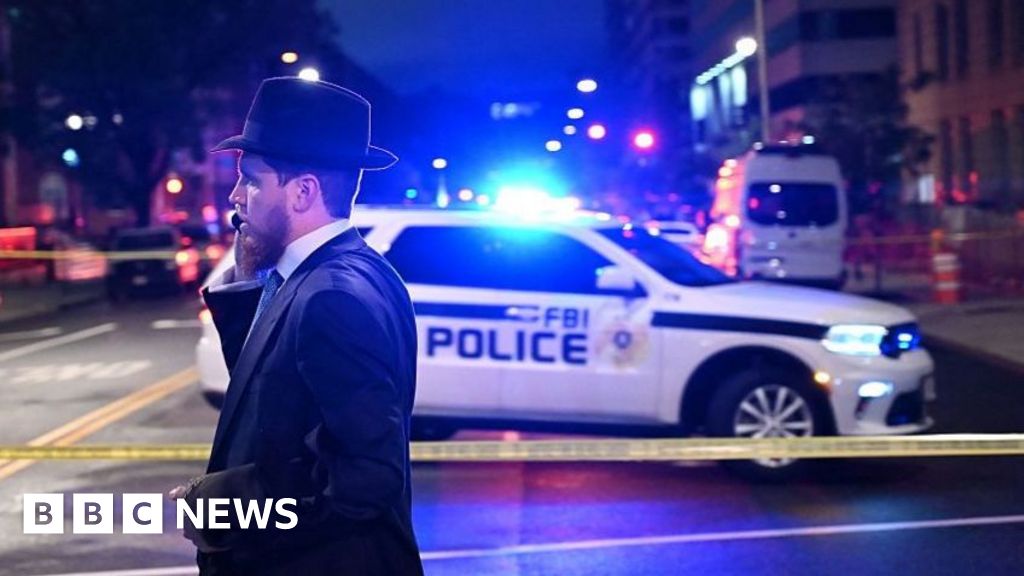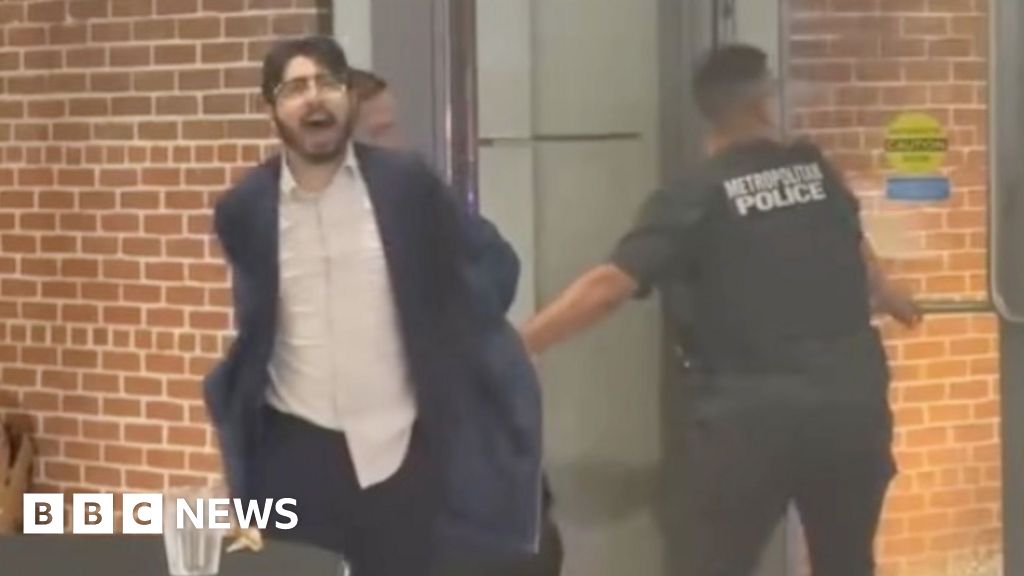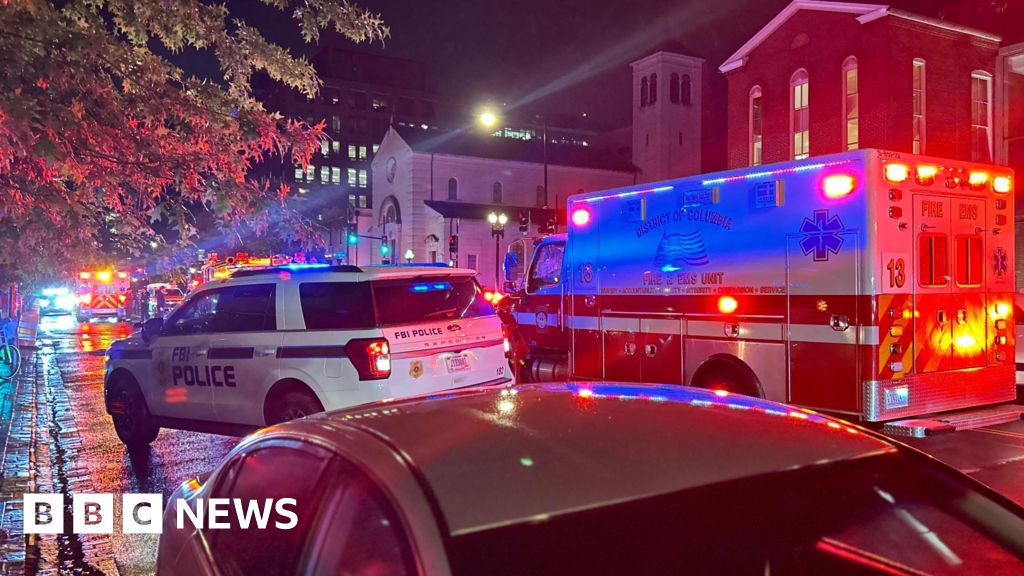ARTICLE AD BOX
By Reality Check and BBC Monitoring
BBC News
Satellite images of Bucha appear to show bodies lying in the street nearly two weeks before the Russians left the town.
An image from 19 March, first reported by the New York Times and confirmed by the BBC, directly contradicts Russian Foreign Minister Sergei Lavrov's claim that the footage of bodies that has emerged in recent days was "staged" after the Russians withdrew.
The image shows objects that appear to be bodies in the exact locations where they were subsequently found by Ukrainian forces when they regained control of the town north of Kyiv.
Russia has made a series of other unfounded claims relating to images from Bucha - here's what the evidence tells us.
Warning: This piece contains graphic images which some may find upsetting.
Claim: 'Faked dead bodies'
After the Russian withdrawal, footage taken from a car as it drove through the town showed bodies on either side of the road.
The Russian Embassy in Canada tweeted the video, dismissing the idea that it showed corpses, with the caption "staged video showing faked dead bodies in the town of Bucha near Kiev".
Pro-Russian social media accounts circulated a slowed-down version of the video, claiming that the arm on one of the bodies moved.
The video is grainy but a closer analysis of it shows that what is claimed to be a moving arm, is actually a mark in the bottom right corner of the vehicle's windscreen.
Debunking Russian claims about Bucha killings
We've circled this mark - which looks like a raindrop or a speck of dirt - along with similar marks visible on the windscreen earlier in the video.
Another Russian claim focuses on a different part of the footage. The car passes another body, lying next to a pavement with red and yellow stones and shattered brown fencing.
As it drives on, the body can be seen briefly in the right-hand wing mirror. Pro-Russian accounts claim the body "sits up".
But a slowed-down version of the video shows the wing mirror is clearly distorting the reflection of the body, as well as houses in the background.
Image source, Ukraine Defence Ministry
Image caption,The body in question appears in the car's wing mirror during the video
The BBC has matched both bodies from the video (posted on 2 April) with high-resolution photos provided by Getty Images and AFP on 3 April.
In the video, the first body is lying on their back near a white and yellow kerb. The pavement to the right is part asphalt and part grass. A silver car can be seen on the pavement with its boot open in front of a white fence.
The same car, kerb, pavement and fence are visible in the Getty/AFP image.
The second body has a black jacket and what appears to be a bloodied tourniquet or bandage on the right arm. They are lying on their side next to a red and yellow pavement, in front of a shattered brown fence.
The black jacket, tourniquet/bandage, pavement and fence all match the photo of the body published by Getty/AFP.
Claim: Bodies 'not stiffened'
Russia's Ministry of Foreign Affairs tweeted: "It is of particular worry that all the bodies of the people whose images have been published by the Kiev regime are not stiffened after at least four days."
According to the Ukrainian military, the Russians left in the early hours of 31 March. The Russians say they left on 30 March.
In the hours after death, bodies go through a process called rigor mortis where muscles contract and stiffen.
We asked a forensic pathologist for their opinion on whether a body would be expected to be "stiffened" after four days. One who has worked in places including Kosovo and Rwanda on war crimes investigations, who did not want to be named, told the BBC that by four days rigor mortis has "usually subsided".
Image source, Getty Images
Image caption,Workers have been putting the dead found in Bucha into body bags
The Russian tweet also claimed that the bodies "have no typical cadaver stains".
It's not clear what this means but the pathologist said the appearance of someone who has died from a gunshot wound or other act of violence will vary widely depending on the weapon used, from what distance they were shot and so on.
There isn't always a lot of visible blood as it may pool underneath people or soak into heavy clothing, especially if someone is dressed for cold weather. The tweet could be referring to the fact the blood within your body pools downwards after death as it stops circulating around the body, which can lead the skin to turn reddish or purple.
But if someone is lying down, the site of this blood pooling and discolouration may well not be visible from an image alone.
Claim: 'Not a single local resident has suffered from any violent action'
The Russian defence ministry claimed that while Bucha was under Russian control "not a single local resident has suffered from any violent action".
This claim, however, contradicts numerous eyewitness accounts from residents.
A local teacher told Human Rights Watch on 4 March that Russian forces had rounded up five men and summarily executed one of them.
Local residents who spoke to the Russian investigative website The Insider painted a similar picture. "These were horrific days. When neither your courtyard, your house or even your life belongs to you. There is no electricity, water, gas. It's forbidden to leave the house, if you leave - you get shot," local resident Kristina told The Insider.
Locals told the BBC that the Russians had systematically broken down doors to loot flats, and, while soldiers stole valuables and food, residents were forced to sit in the cellar.
Reporting by: Jake Horton, Shayan Sardarizadeh, Rachel Schraer, Olga Robinson, Alistair Coleman and Daniele Palumbo.
Video production by: Sarah Glatte and Jacqueline Galvin.

 3 years ago
49
3 years ago
49








 English (US) ·
English (US) ·